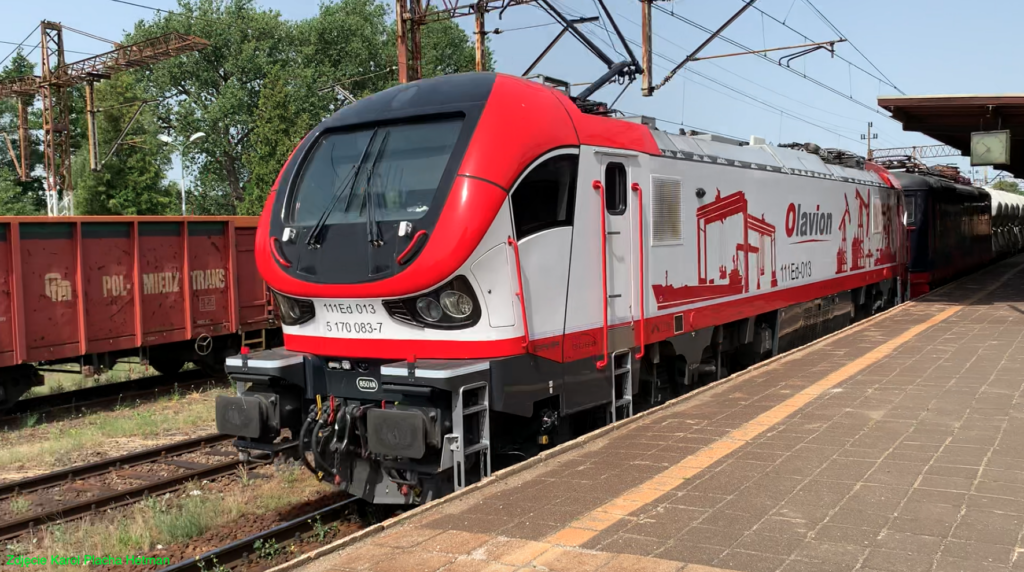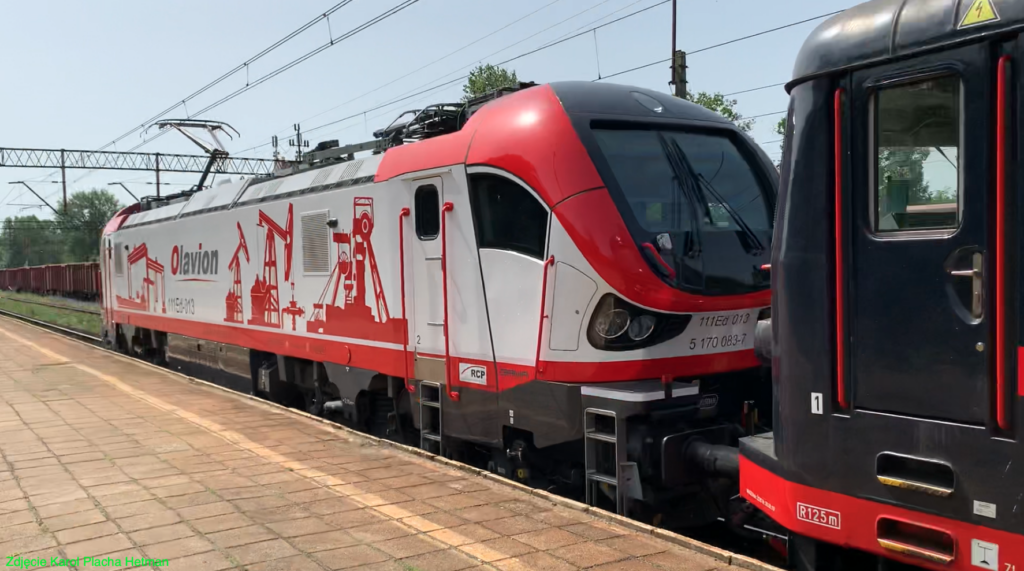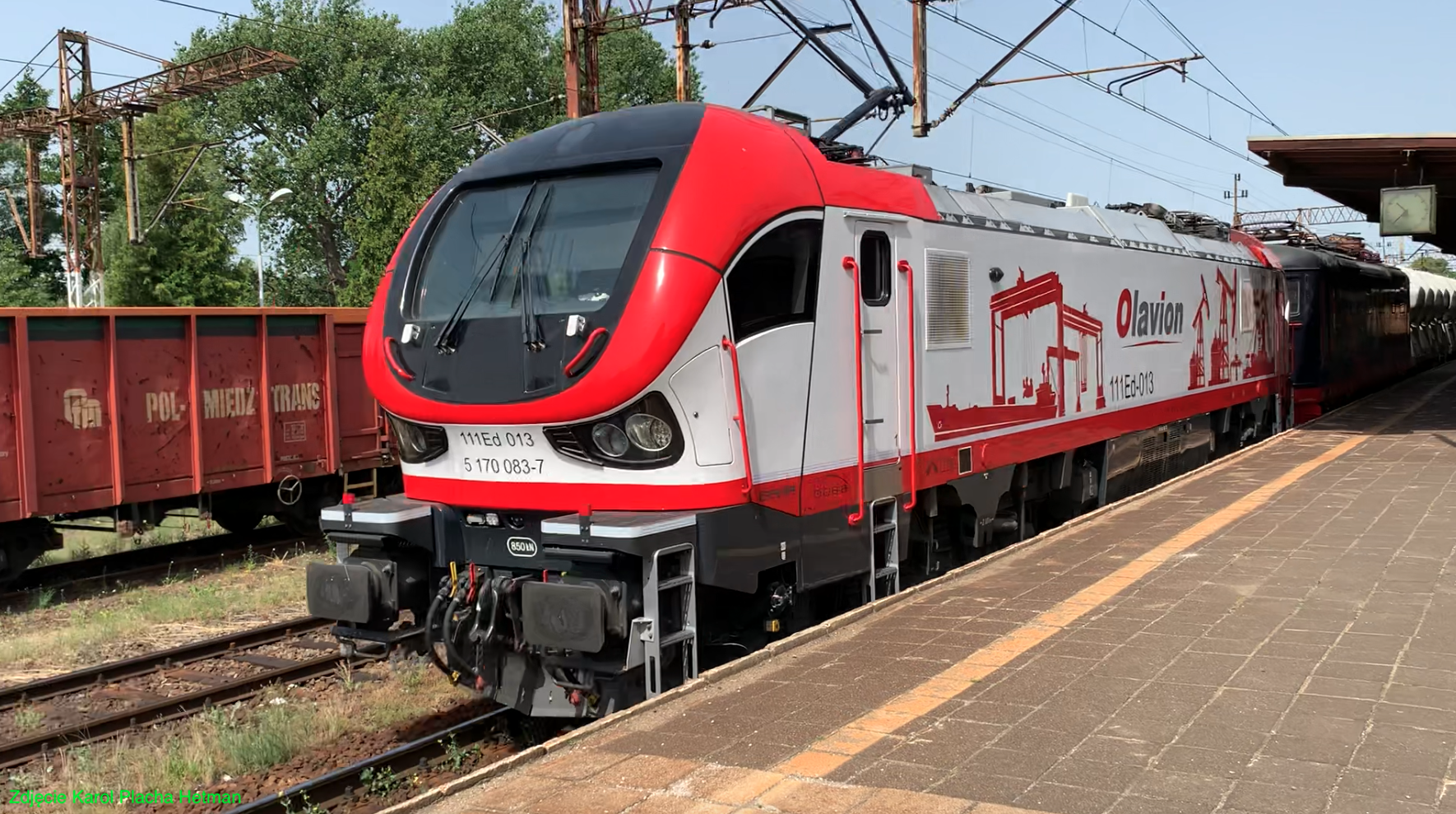Bydgoszcz 2024-03-14
Electric Locomotives PESA Gama. 2024



The PESA Gama electric locomotive is a good return of Polish manufacturers to the construction of locomotives in Poland, which were designed by Polish engineers. After a difficult 90 years of political transformation (without lustration and decommunization), two large manufacturers of rolling stock appeared on the Polish market; NEWAG Nowy Sącz and PESA Bydgoszcz. In 2009, the first Polish new locomotive was the Dragon electric locomotive, which was developed by ZNTK Gliwice together with the plant in Nowy Sącz; later NEWAG. In 2012, the locomotives appeared; NEWAG Griffin and PESA Gama.
The PESA Gama family of locomotives was developed in Bydgoszcz; electric, electric with additional power generator, diesel and hybrid. PESA Gama locomotives are used by, among others, PKP InterCity, Koleje Mazowieckie, Pol-Miedź Trans, RCP Orlen– Koltrans, Koltrans, Lotos, Ecco Rail, Kolprem, RCP, RCP 2. The largest number of locomotives belongs to the Rail Capital Partners rolling stock pool.
The pool is a loose agreement between companies concluded for the purpose of implementing specific projects, such as conducting a common pricing policy, defining sales markets or creating common funds. This agreement is ad hoc and temporary.
The basic model of the PESA Gama locomotive has become an electric locomotive, which operates under 3 kV DC traction.
T-T PESA Gama data: Start of production 2012. Axle arrangement Bo’Bo’. Length 19.80 m. Width 3.00 m. Electric network (3 kV DC, 15 kV AC or 25 kV AC). Electric locomotives with a speed of up to 200 km/h in passenger traffic and up to 160 km/h in freight traffic. Diesel locomotives with a speed of 160 km/h in passenger traffic. Maximum tractive effort is 300 kN, also when running on the combustion engine. Starting tractive effort 320 kN. Maximum axle load 206 kN. 420 kVA generator.
Offered versions of PESA Gama locomotives:
Type 111DE – hybrid, 3 kV DC power supply, universal, speed 160 km/h.
Type 111DEa – diesel-electric, 3 kV DC power supply, universal, speed 140 km/h.
Type 111DEb – diesel-electric, 3 kV DC power supply, universal, speed 160 km/h.
Type 111Ea – electric, 3 kV DC power supply, freight, speed 140 km/h.
Type 111Eb – electric, 3 kV DC power supply, universal, speed 160 km/h.
Type 111Ec – electric, 3 kV DC power supply, freight, speed 140 km/h.
Type 111Ed – electric, 3 kV DC power supply, universal, speed 160 km/h.
Type 111Ee – electric, 3 kV DC and 15 kV AC power supply, freight, speed 140 km/h.
Type 111Ef – electric, 3 kV DC and 15 kV AC power supply, universal, speed 160 km/h.
Type 111Eg – 6,000 kW electric, 3 kV DC power supply, passenger, speed 189 km/h.
Type 111Eh – 6,000 kW electric, 3 kV DC and 15 kV AC power supply, passenger, speed 189 km/h.
Type 111MS – 6,400 kW electric, 3 kV DC, 15 kV AC and 25 kV AC power supply, passenger, speed 200 km/h.
Type 111MS – electric with a power of 6,400 kW, power supply 3 kV DC, 15 kV AC and 25 kV AC, freight, speed 140 km/h.
Construction history.
The first version of the PESA Gama locomotive was a locomotive called Marathon, which was designated 111Ed Marathon. The locomotive was created thanks to funding from the National Center for Research and Development, i.e. the Polish executive agency within the meaning of the Act of August 27, 2009, on public finances (Journal of Laws of 2022, item 1634), established to carry out tasks in the field of scientific, scientific-technical and innovation policy of the state. The center is located at ul. Chmielna 69 in Warsaw. The funding covered the project of an electric locomotive, with a speed of over 200 km/h, powered by various currents, with a modular design. The first locomotive of the 111Ed-001 type began to be built at the beginning of 2012. The PESA Gama locomotive was presented on September 18, 2012, at the InnoTrans 2012 Trade Fair in Berlin.
The first test runs of the locomotive were conducted in the Bydgoszcz area. Later, runs were made to Inowrocław, Poznań, Zduńska Wola. The locomotive was tested on the track in Żmigród. During the tests, a speed of 173 km/h was achieved. The locomotive received its first certificate for a speed of 160 km/h, for passenger trains and 140 km/h for freight trains. From January 11, 2013, commercial runs began under the supervision of Lotos Kolej. The locomotive pulled trains to Gdańsk, Zduńska Wola and other locations. Since March 2013, the locomotives have been tested in PKP InterCity. 26 trains were serviced. The routes were: Warsaw – Kraków, Warsaw – Poznań, Warsaw – Gdynia, Warsaw – Wrocław. There were no failures. A list of necessary corrections was drawn up.
A person was hit during one of the runs. The locomotive was sent for inspection. After the locomotive was repaired in May 2013, it was sent back to Lotos Kolej. Here, the 111Ed-001 locomotive ran until March 2014.
The PESA Gama locomotives were tested by carriers; Pol-Miedź Trans and Orlen KolTrans. Certificates for various versions of the PESA Gama locomotives were issued in July 2014. On April 15, 2014, the first contract was signed for the delivery of 2 type 111Eb locomotives for Koleje Mazowieckie. On July 8, 2015, the first type 111Ed locomotive was sold to Lokomotiv and an option for two more locomotives was signed. On July 7, 2020, a contract was signed for the delivery of one 111Ed locomotive for Pol-Miedź Trans. In July 2021, a contract was signed for the delivery of 3 locomotives for PCC Intermodal. On October 26, 2022, PKP InterCity signed a contract for the delivery of 16 111Ed locomotives. By January 2021, 33 PESA Gama locomotives have been produced; 22 electric and 11 diesel. PESA Gama is operated by the following companies: PKP InterCity, Koleje Mazowieckie, Pol-Miedź Trans, RCP Orlen– Koltrans, Koltrans, Lotos, Ecco Rail, Kolprem, RCP, RCP 2.
The 111Eb type locomotive is not equipped with an additional generator. These locomotives are used by Koleje Mazowieckie, for example.
PESA Gama Maraton dual-traction electric – diesel. This is an electric locomotive that has been equipped with an additional generator and the locomotive performs a shunting function on sidings – tracks without wires.
PESA Gama diesel.
In July 2014, the first PESA Gama diesel locomotive, type 111Db (SU160), was presented. It was a locomotive built to the specification provided by PKP InterCity. In September 2014, the locomotive was shown at the InnoTrans trade fair. Tests were carried out on routes without wires, including the Krzyż – Piła Główna line. The diesel locomotive ran with passenger and freight trains. On 17 July 2014, a contract was signed for the delivery of 10 diesel locomotives type 111Db (SU160) for PKP InterCity. The locomotives were ordered to service the following routes: Ełk – Korsze, Ełk – Suwałki, Rzeszów – Zamość, Rzeszów – Zagórz, Krzyż – Gorzów Wielkopolski, Piła – Krzyż, Rzeszów – Lublin.
In May 2015, PKP InterCity began test runs of the first delivered locomotive with passenger cars without passengers. Normal operation began on 16 June 2015. Thanks to the purchase of the SU160 locomotive, the carrier could stop renting SU46 locomotives from PKP Cargo. However, there were difficulties in operating the SU160 locomotives due to severe frosts and accidents at rail-road crossings and collisions with wild animals. These events took some locomotives out of service. PKP InterCity acquired the SU160 prototype (111Db-001) and also borrowed 5 diesel locomotives from České Dráhy, with 1,000 hp diesel engines. The case had a second bottom, because a German lobby appeared, which wanted to import SIEMENS diesel locomotives. In addition, the manufacturer offered to rebuild old SIEMENS electric locomotives into diesel versions, and supposedly within 10 hours.
PESA Hybrid Gama.
The hybrid range is a locomotive that is suitable for driving trains under a 3 kV catenary at a speed of 160 km/h and for driving on routes without a catenary at a speed of 120 km/h.
In September 2017, the interested parties signed an agreement on research and development cooperation within the framework of this project. In January 2022, the first copy of the locomotive was completed. In February 2022, test runs began. On October 26, 2022, a contract was signed for the delivery of 16 electric-diesel locomotives together with their maintenance.
PESA Gama design.
The 111E vehicle bogie was specially designed for the Gama locomotive. The basic version is designed for operation at speeds of up to 160 km/h and in ambient temperatures ranging from -30 degrees C to +60 degrees C. The 200 km/h version of the bogie is modified to accommodate a different transmission and different traction motors. The transmissions are single-stage and manufactured by Henschel Antriebstechnik Kassel.
VEM traction motors of various types were used; with a power of 1,400 kW or 1,500 kW or 1,600 kW. 4 inverters were installed, one for each motor and two converters. Stemmann current collectors were used.
The power of the access motor allows for servicing all sidings, as well as for introducing a train weighing 3,200 tons on a gradient of up to 7 per mille and for the train to move on sections without traction voltage, with a minimum range of 42 km, (fuel tank with a capacity of 900 liters).
The locomotive has two levels of suspension. The first is coil springs, the second is flexicoil springs. Additionally, vertical, horizontal and diagonal dampers were used to reduce vibrations between the bogie and the body.
In locomotives with an additional combustion engine, a 403 kW combustion engine (Caterpillar C15 ACERT) was installed, coupled to a 420 kW AC generator manufactured by EMIT. When running on the combustion engine, the maximum operating speed is 40 km/h. Without wagons, the speed is 76 km/h. The capacity of the diesel fuel tank is 900 litres. The conversion of the electric drive to a combustion drive takes 5 minutes. The combustion engine must be started and other activities must be performed. In the units for Rail Capital Partners, the CAT engine was replaced by a Volvo engine.
The PESA Gama locomotive is equipped with electrodynamic brakes with energy recovery to the traction network or its loss in resistors. There are also standard pneumatic and electro-pneumatic brakes. Each bogie has two diagonally mounted spring parking brakes. The brake discs are clamped by Knorr-Bremse cylinders, attached to the bogie frame.
The locomotive body is made of steel and profiles and sheets of aluminium alloys. The strength of the body structure meets the requirements of the EN 12663 standard. The end carriages are equipped with buffers, screw couplings, brake and power cable ends. The locomotive is divided into three parts; two cabins at the ends of the locomotive and the engine compartment. The cabins are equipped with crumple zones. During a collision, the force of the collision is first taken over by the coupler, and the key role is played by energy absorbers, which, in addition to absorbing it, also prevent the vehicles from climbing over each other. In the second phase, the energy of the collision is absorbed by the so-called honey comb, a block of specially shaped aluminum elements.
The cabins are equipped with air conditioning with a heating function, manufactured by Konvekty. The mechanics also have access to a closed-system toilet manufactured by TM Technischer Gerätebau. A toilet is not often installed in vehicles of this type. The mechanics also have access to a kettle, a refrigerator and a microwave. The equipment of the cabins was consulted with the Railway Workers’ Unions. The cabin also received praise from drivers from Italy and the Czech Republic during the InnoTrans 2012 Fair. The vehicle has an external camera system, including a camera directed at the screw coupling. The locomotive has been equipped with cruise control in the control system. LED lighting has been used.
PESA Gama locomotive type 111Ed-013.
EVN number: 91 515 170 083-7 (PL-RCP). Year of production 2020. Delivered to the user in June 2020. The locomotive was wrapped in the company colors; white and red.
Written by Karol Placha Hetman
